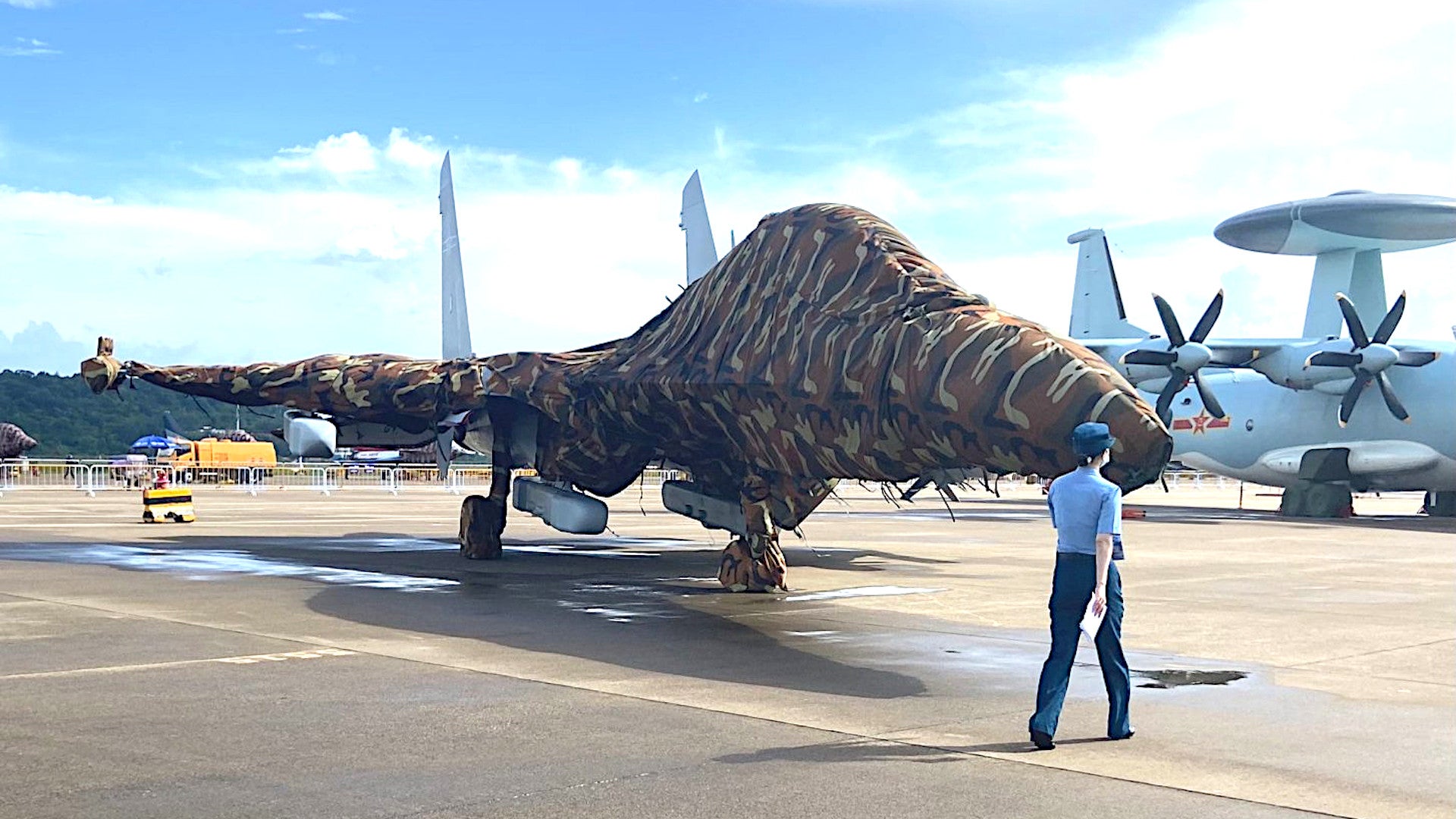The 2021 Zhuhai Airshow in China doesn’t officially kick off until next week, but the setup for the event has already started, and pictures are emerging of the aircraft and other systems that will be on display. One particularly significant arrival that has been spotted so far is an example of the J-16D electronic warfare jet, which is often compared in broad strokes to the U.S. Navy’s EA-18G Growler. The Chinese jet has what appears to be at least three different and previously unseen electronic warfare pods on pylons under its wings and fuselage.
This year’s Zhuhai Airshow is the first time the J-16D will be on public display in any configuration, which made its appearance earlier this week notable to begin with. The Chinese government routinely shows off new aircraft and highlights certain advanced capabilities of existing designs at this event, which has been occurring biennially since 1996. This particular iteration of the show was supposed to occur last fall but was postponed in the face of the ongoing COVID-19 pandemic.
The J-16D, which is derived from the two-seat J-16 fighter jet — itself an improved Chinese derivative of the Soviet Su-27 Flanker design — reportedly first flew in December 2015. The J-16D may also be linked to the J-15D, a two-seat electronic warfare version of China’s carrier-based J-15 Flanker derivative.
The D variant differs from the basic J-16 in a number of significant ways, including a redesigned radome that experts and observers have suggested might point to the aircraft carrying an advanced active electronically scanned array (AESA) radar. The nose-mounted infrared search and track (IRST) system and internal 30-mm cannon found on the standard J-16 fighter have also been removed on the D version, reportedly to help make room for a robust internal electronic warfare system. These changes are similar to what has also been seen on the J-15D.
The jet also has a number of antennas on all sides of its fuselage and features wingtip pods that are broadly reminiscent of the ones seen on the EA-18G. Though the exact capabilities of the J-16D’s internal electronic warfare suite are unknown, the EA-18G’s wingtip pods are part of that aircraft’s internal AN/ALQ-218 system. The complete AN/ALQ-218 suite has radar warning receiver (RWR), electronic support measures (ESM), and electronic intelligence (ELINT) functionality, giving the Growler a comprehensive ability to detect, categorize, and geolocate enemy radars and other hostile emitters, as well as collect data about the signals they are putting out.
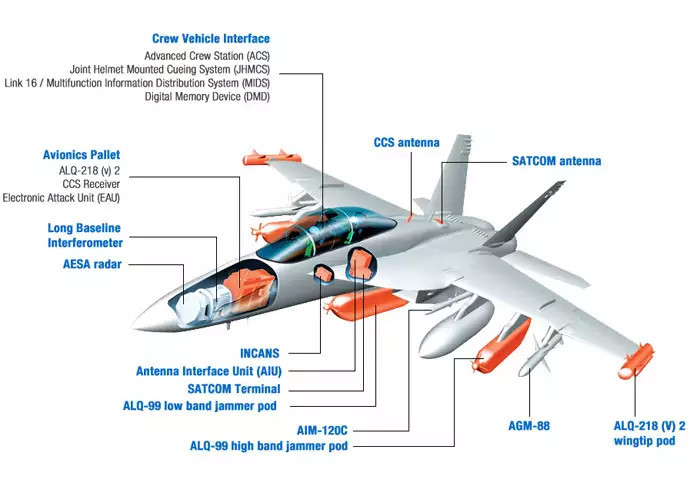
Though it has long been expected that the J-16D, like the EA-18G, would supplement these onboard electronic warfare capabilities with external pods, the pictures from Zhuhai appear to be the first official confirmation of this and our first look at what the jet’s full operational configuration might look like. At least three different types of pods are visible. The ones under the wings appear to share a similar core shape, but the example under the left wing has a number of external blade-type antennas under its front end. The pods under the fuselage look to be very similar to each other but may also have some differences.
While it is unclear what the capabilities of each of these pods might be, that the Chinese would develop multiple types for the J-16D makes perfect sense. The EA-18G currently uses two variants of the AN/ALQ-99 pod, one of which is designed to jam high-band emitters, while the other is focused on low-band ones. The U.S. Navy is now in the process of developing a new family of electronic warfare pods for the Growler, which adds in a mid-band-focused type. You can read more about the Navy’s Next Generation Jammer (NGJ) program, as a whole, here.
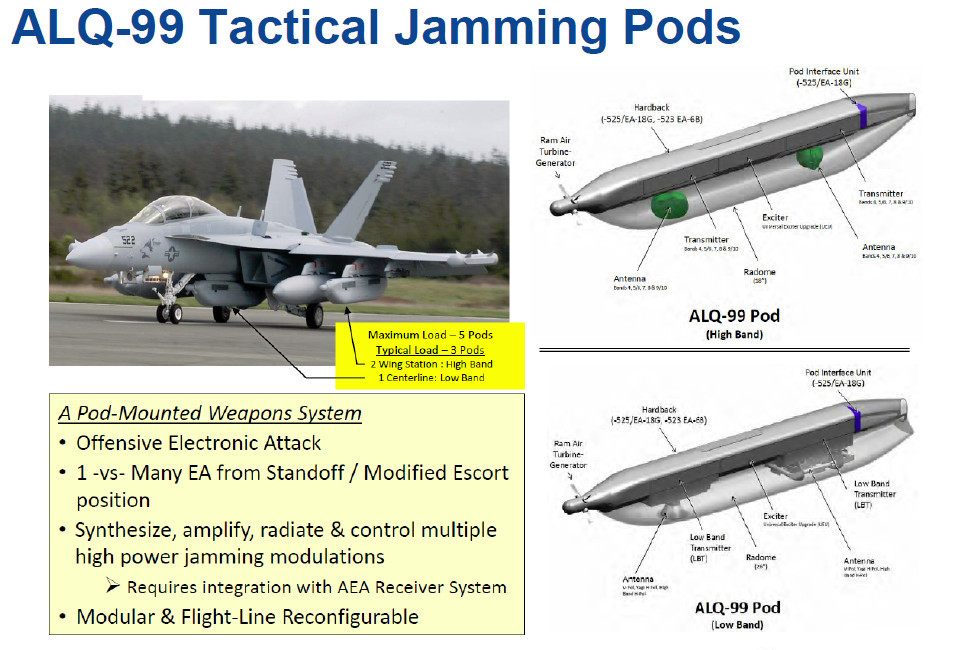
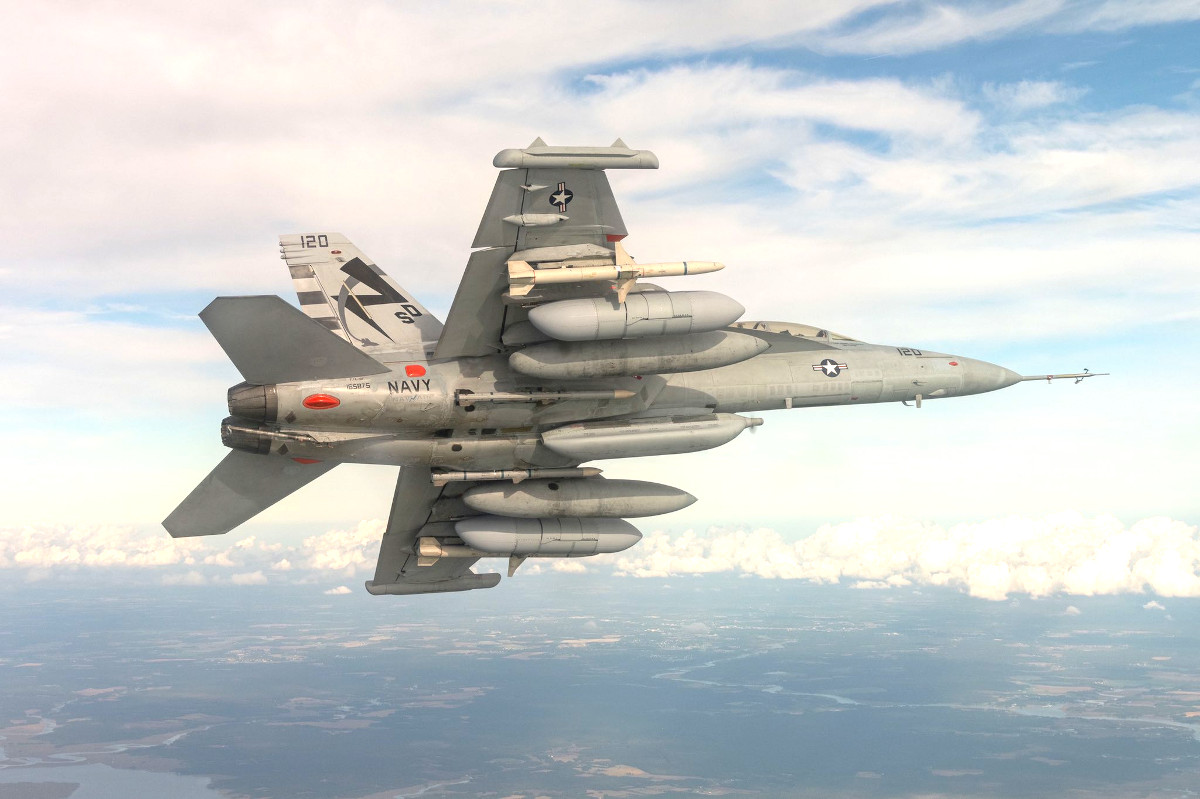
Having multiple pods optimized for different frequency bands offers advantages for attacking specific kinds of electronic threats and systems, such as fire-control radars that typically operate at higher frequencies ranges. Having more than one pod combined with an internal electronic warfare suite could give the J-16D the ability to engage more emitters at once, while also scooping up other useful information. If one or more of these pods is itself focused on other electronic intelligence capabilities, such as communications intelligence (COMINT), this would also give the jet valuable additional intelligence-gathering abilities and a better capability to jam the specific systems the pod focuses on. We have seen this with the Marine Corps’ Intrepid Tiger electronic warfare and intelligence family of podded systems, for instance. It’s also worth noting that an aircraft so equipped can potentially trigger cyber attacks on air-defense and communications systems, as well as provide electronic attacks and broad jamming support.
The J-16D is also just one of a growing number of electronic warfare aircraft, including larger types based on cargo aircraft designs, available to the People’s Liberation Army (PLA), as well. The Chinese military also has various existing self-protect electronic warfare pods that can be used on other combat jets and bombers. This mirrors, in broad respects, the layered aerial electronic warfare capabilities that the U.S. military fields, with aircraft like the EA-18G providing longer-range support to tactical aircraft, including stealth types, with their own organic capabilities that are operating inside enemy air-defense bubbles. Larger platforms then offer additional standoff jamming support.
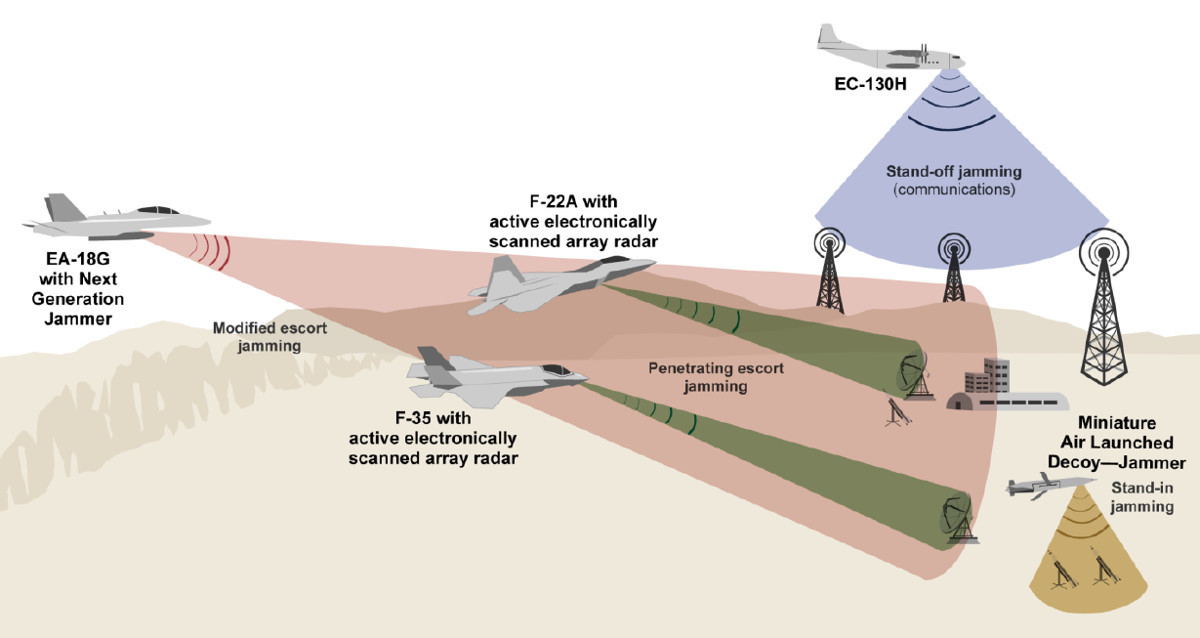
It’s not hard at all to see a future where J-16Ds carrying an array of electronic warfare pods will serve in a similar role to the EA-18G when working with both non-stealthy combat jets, such as other J-16s, and the stealthy J-20, among other types. J-16Ds may eventually be able to launch kinetic attacks directly on emitters using anti-radiation missiles just like the Growler, as well. It’s also hardly surprising that the PLA would be looking to establish this kind of overall electronic warfare capacity, together with additional capabilities on the ground and at sea, given the security environment that the government in Beijing is looking at in the future both regionally and more globally.
Aerial electronic warfare support would almost certainly be a major factor in any major Chinese military intervention across the Taiwan Strait given the island’s significant air-defense capabilities. These would be important capabilities to bring to bear in any larger-scale conflict against more prominent potential adversaries in the broader Indo-Pacific region, such as India or even the United States.
Just this week, Secretary of the U.S. Air Force Frank Kendall specifically cited electronic warfare capabilities as being among the areas where the Chinese have been focusing on “increasing inventory levels and the sophistication of their weapons and modernizing redundant systems throughout the kill chains that support their weapons.” Air Force Lieutenant General Clint Hinote, the service’s Deputy Chief of Staff for Strategy, Integration, and Requirements, also said just days ago that “we are out of time” in terms of the PLA catching up to the capabilities of the U.S. military. Both men were speaking at this year’s annual Air, Space, and Cyber Conference, which the Air Force Association hosts in Washington, D.C.
All told, while we don’t know the exact capabilities of the J-16D, or the newly unveiled pods that have been developed to go along with, the jet clearly reflects a broad push on the part of the PLA to develop new, robust electronic warfare assets as part of its larger modernization efforts.
Contact the author: joe@thedrive.com
